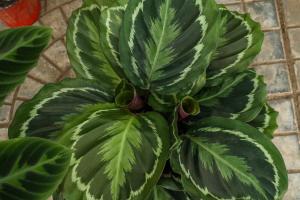Introduction
If you are an avid gardener or just beginning to explore the joys of outdoor potting, you may have noticed your plants showing signs of yellowing foliage. Yellow leaves can be an indication of a number of problems, from pest infestations to nutrient deficiencies. In this article, we will explore some common reasons why your outdoor potted plants might be turning yellow and what you can do to fix the problem.
Insufficient Watering
One of the most common reasons for yellowing foliage in potted plants is insufficient watering. Depending on your climate and the type of plant you are growing, your potted plants may need to be watered more or less frequently. As a general rule, you should water your outdoor potted plants when the soil is dry to the touch. If you notice yellowing leaves and the soil feels dry or dusty, watering may be the solution to your problem.
Too Much Fertilizer
While it’s important to provide your potted plants with the nutrients they need to thrive, too much fertilizer can actually do more harm than good. Over-fertilization can burn roots, leading to yellow or brown leaves. Be sure to follow the instructions on your fertilizer packaging carefully, and don’t be tempted to add more than recommended. As a general rule, outdoor potted plants only need to be fertilized once a month during the growing season.
Pest Infestations
Yellowing leaves can also be a sign of pest infestations, such as spider mites, aphids, or whiteflies. These tiny insects can quickly multiply and wreak havoc on your plants, sucking the sap out of leaves and causing them to turn yellow, brown, or even fall off. To keep your potted plants healthy and free of pests, be sure to inspect them regularly for signs of infestations and treat them promptly with insecticidal soap or other appropriate solutions.
Root Rot
If your potted plants are turning yellow and the leaves feel limp or mushy, root rot may be the cause. Root rot is a fungal disease that thrives in wet conditions and can quickly spread throughout your potting soil, causing damage to roots and foliage. To prevent root rot, be sure to provide adequate drainage for your pots and avoid overwatering. If root rot has already set in, you may need to repot your plants in fresh, well-draining soil and remove any damaged roots.
Conclusion
Overall, if your outdoor potted plants are turning yellow, there are a number of potential causes to consider. By following the tips outlined in this article, such as watering appropriately and avoiding over-fertilization, you can keep your plants healthy and beautiful all season long.

 how many times do yo...
how many times do yo... how many planted tre...
how many planted tre... how many pine trees ...
how many pine trees ... how many pecan trees...
how many pecan trees... how many plants comp...
how many plants comp... how many plants can ...
how many plants can ... how many plants and ...
how many plants and ... how many pepper plan...
how many pepper plan...































